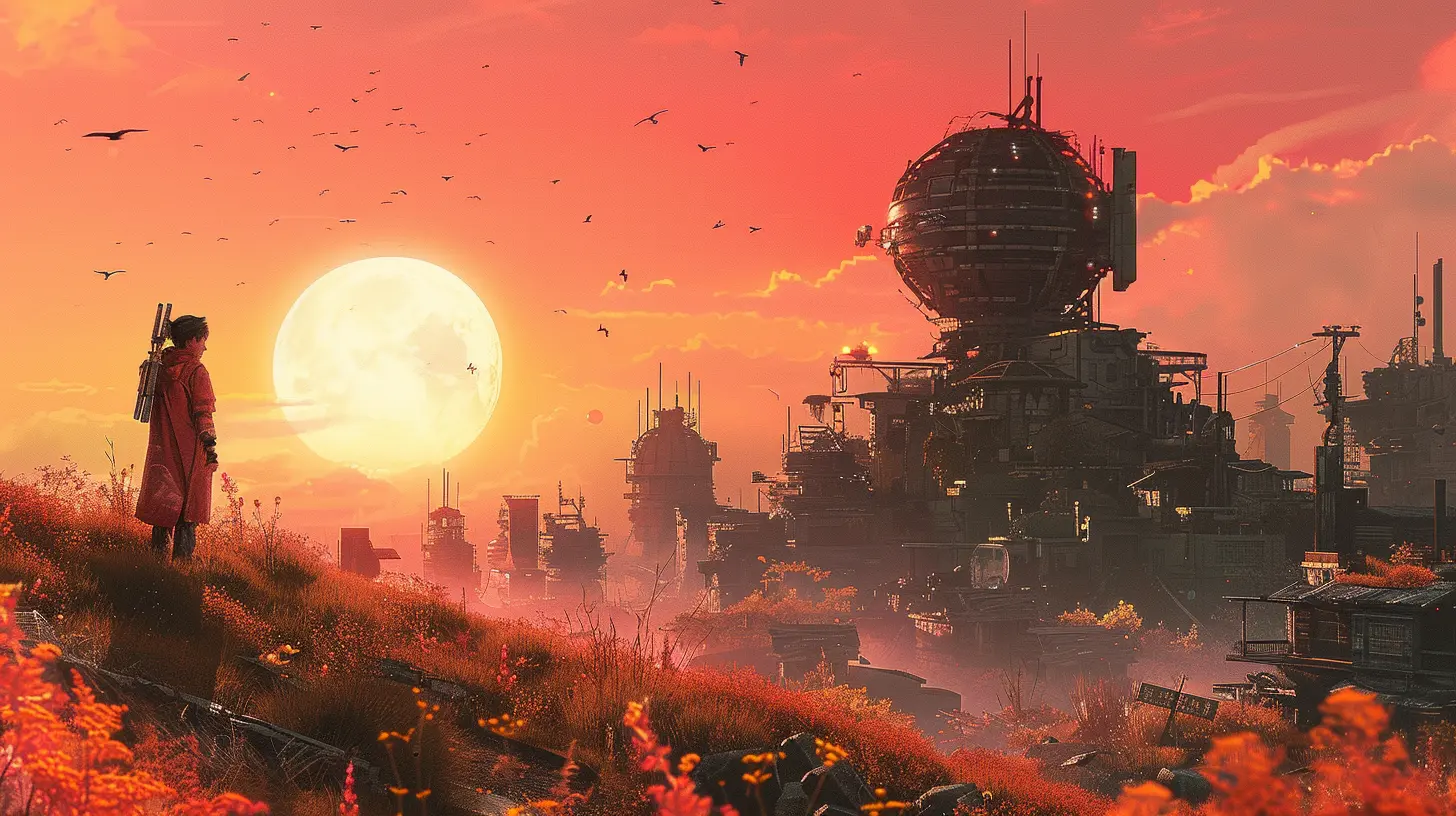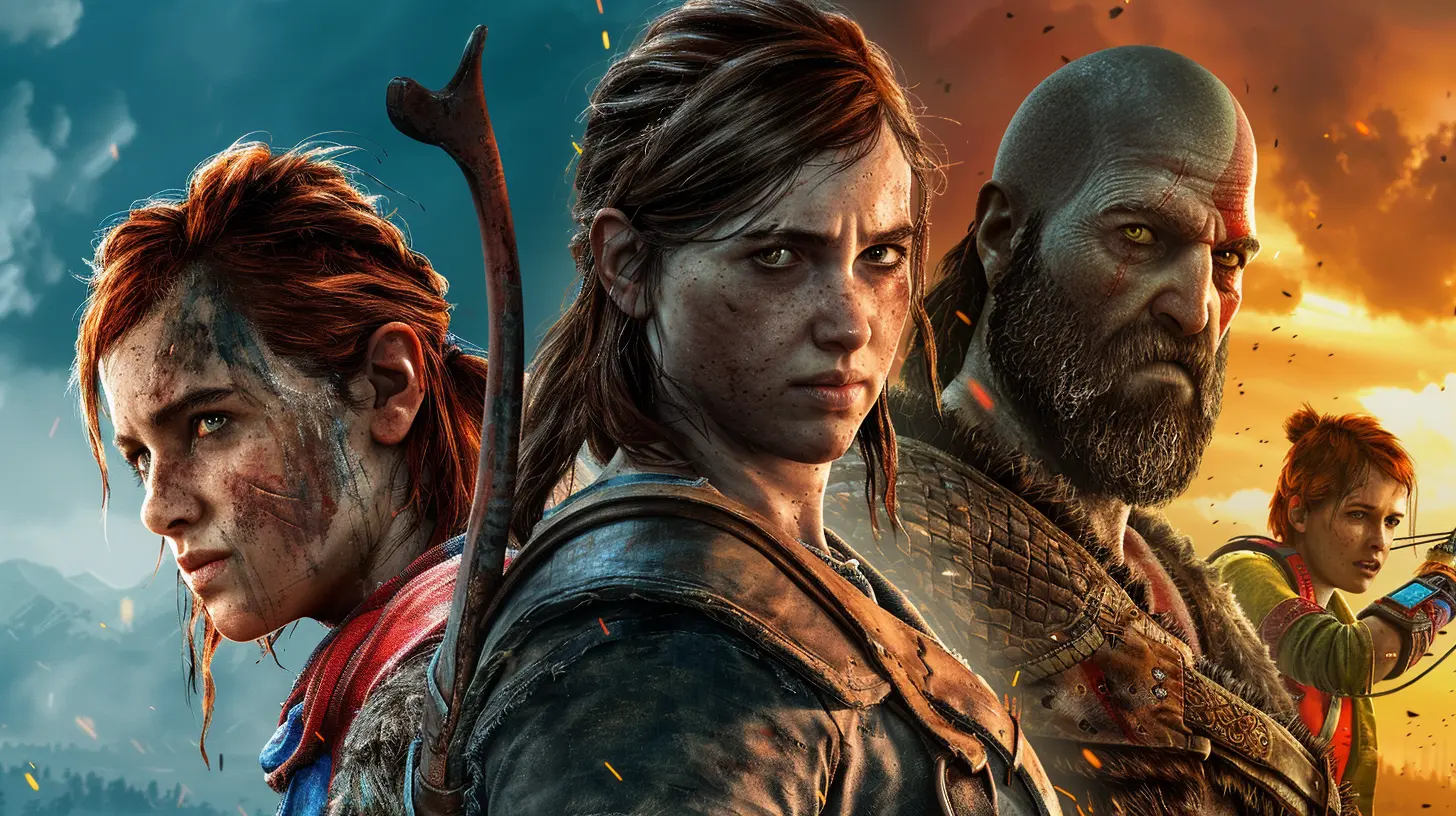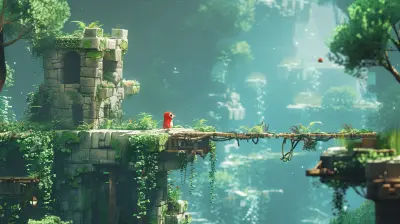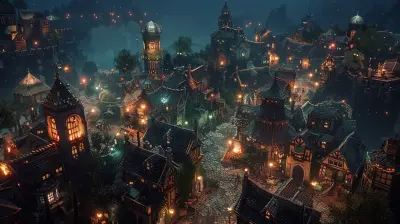Genre Hybrids That Redefine Replay Value
5 August 2025
Let’s be real for a moment—games are everywhere, and gamers are spoiled for choice. But have you ever found a game so good that even after finishing it, you couldn’t help but dive right back in? Maybe the story had multiple paths, or the gameplay was dynamic enough to feel fresh with each run. That, my friend, is replay value in action. And nothing cranks up that replay value like a well-executed genre hybrid.
Genre hybrids are like a perfectly crafted smoothie of gameplay styles. When done right, they blend different gaming mechanics into something new, exciting, and—most importantly—replayable. It’s like mixing peanut butter and chocolate: two great things that, together, become legendary.
So, let’s deep dive into how genre hybrids are changing the game (literally) and why they’re the secret sauce behind endless hours of fun.
Why Genre Hybrids Matter
Games used to stick to their lanes—RPGs were about story and stats, shooters focused on fast-paced action, and puzzles tested your problem-solving skills. Nowadays, developers are getting a lot more creative. They're smashing genres together in ways you wouldn’t expect.And guess what? It works. Mixing genres opens doors to layered gameplay, unique storytelling mechanics, and endless variation. That’s where replay value comes in. When a game isn’t confined to one style, every run can feel like a new experience.
It’s Like Having Multiple Games in One
Imagine playing a game that’s a bit like chess, a bit like dodgeball, and a sprinkle of a choose-your-own-adventure novel. Sounds wild, right? That’s the magic of genre hybrids—they make you feel like you’re playing multiple games all wrapped in one cleverly designed package.
The Rise of Hybrids: A Perfect Storm
You might be wondering, “Okay, but what sparked this genre-blending trend?” Easy answer: innovation meets demand. Players today crave something fresh, and developers want to push boundaries. With more powerful hardware and platforms supporting indie devs, it's never been easier to experiment.Let’s break down some killer genre mashups that are redefining how we play—and replay—games.
1. Roguelike + RPG: Infinite Adventures Await
If there’s one hybrid that’s taken the gaming world by storm, it’s the roguelike-RPG combo. Think permadeath, randomized levels, mixed with a deep leveling system and customization.Example: Hades
Supergiant Games nailed this hybrid with Hades. Every time you die, the game reshuffles its dungeon layout, but your character progression remains. The more you play, the better you understand the characters, the story, and how to improve. It’s like Groundhog Day with gods and demons—frustrating but addictive.Why it works? Because no two runs are the same. You keep coming back for "just one more try" and end up playing for hours.
2. FPS + RPG: Shoot and Level Up
We all love a good shooter, right? But combine fast-paced gunplay with experience points, loot, and skill trees? Now we’re talking.Example: Borderlands Series
Borderlands takes chaotic gunplay and sprinkles in RPG elements like skill specs, dialogue choices, and a loot system that makes you feel like a kid in a candy store. The different character builds and playstyles make each playthrough feel like a totally new adventure.It’s the perfect mix of brains and bullets.
3. Strategy + Card Game: Tactical Deck Building
Strategy games are all about thinking ahead, while card games focus on building powerful combos. So what happens when you combine them? You get highly replayable brain-burners with endless possibilities.Example: Slay the Spire
Slay the Spire turns every run into a calculated risk. You build your deck on the fly, face different paths, and adapt to randomized enemies. It's like playing chess with a hand of cards—you never play it the same way twice.What keeps players coming back? The “what if” factor. What if I take a different route? What if I choose this card instead of that one?
Spoiler alert: it never ends.
4. Simulation + Narrative: Living the Story
Some games let you live a life, make choices, and see how your story unfolds. These hybrids blend open-ended gameplay with rich storytelling, leading to unique experiences with every play.Example: Stardew Valley
Not just a farming sim. Not just a relationship-building RPG. Stardew Valley is a beautiful mix that lets you shape your story over time. Want to focus on mining and combat? Go for it. Want to build the biggest farm in town? You do you.Each decision shapes how the game world reacts, and that flexibility keeps players locked in for the long haul.
5. Metroidvania + Soulslike: Brutal Exploration
A newer trend is combining the exploration and upgrade-heavy nature of Metroidvanias with the brutal difficulty and combat style of Soulslike games.Example: Hollow Knight
Hollow Knight throws you into a mysterious world with minimal direction. The combat is tough, the world interconnected, and the secrets endless. It’s the kind of game where you can miss entire areas on a first playthrough—and that’s by design.You play it once, then realize how much you missed. So, of course, you’ve gotta go back.
6. Platformer + Rhythm: Feel the Beat
These hybrids turn every jump and move into a beat-based action. It mixes precision platforming with timing, rhythm, and sometimes even music creation.Example: Crypt of the NecroDancer
Imagine defeating skeletons and dragons while keeping time with an epic soundtrack. That’s the charm here. You can’t just slash wildly—you’ve got to feel the beat. It forces you to think, move, and react in rhythm. Miss the beat? Die trying.The result? A platformer that feels more like a dance party gone rogue.
7. Horror + Survival Crafting: Scared and Resourceful
Crafting games already have a strong loop that encourages gathering, building, and exploring. But throw in horror mechanics, and you’ve got a recipe for heart-pounding tension and strategic depth.Example: The Forest
During the day, you build your fortress. At night, you fend off terrifying enemies. It’s terrifying, yes, but the push-and-pull between peaceful crafting and survival horror makes for a game loop that’s hard to quit.You want to go back, even if it’s just to survive one more night.
8. MOBA + Auto-Chess: Strategic Real-Time Thinking
Auto-chess games rose fast and hard, but when you mix it with MOBA strategy, you get something that’s both deep and digestible.Example: Teamfight Tactics
It's got the team-building strategy of a MOBA, but you don’t control your characters directly. You focus on synergies, positioning, and economy. Then you watch the magic happen.Each match is new, the meta constantly evolves, and climbing the ranks becomes a long-term goal. That's sticky gameplay right there.
What Makes Genre Hybrids So Replayable?
Alright, let’s sum this up. What’s the secret sauce?1. Variety and Randomness
A hybrid game usually has more moving parts, which means more variations. Procedurally generated levels, evolving strategies, new loot drops—no two sessions are ever alike.2. Multiple Playstyles
You can approach hybrid games in several ways. Want to be aggressive? Play it like a shooter. Prefer a stealthy approach? Use RPG elements. This flexibility invites experimentation.3. Emotional Investment
The best hybrids blend mechanics with narrative. That emotional tether? It keeps you coming back. You want to know what happens if you make a different choice or take a new path.4. Challenge and Mastery
Hybrid games often require mastering multiple skills. You can get good at one part, but to succeed, you’ve gotta level up across the board. That’s a long but rewarding climb.The Future of Genre Hybrids: What Lies Ahead?
If this trend tells us anything, it’s that the future of gaming is unpredictable—in the best way. As technology and creativity keeps expanding, we’ll see even bolder combinations.Imagine an open-world farming horror rhythm game with deck-building storytelling mechanics. Sounds crazy? Give it five years. Maybe less.
The point is: genre hybrids are here to stay. They challenge the norm and keep things spicy. And for gamers like us, that means more games with longer lifespans and narratives that never get old.
Final Thoughts
Genre hybrids are the chameleons of the gaming world. They evolve, adapt, and surprise us. They pack in multiple experiences and multiply replay value like rabbits on energy drinks.The best part? They give us freedom—freedom to play our way, switch things up, and always find something new on a second (or tenth) playthrough.
So next time you’re itching for something fresh, look out for those genre-blending oddballs. They may not fit in one box, but that’s exactly why they stand out.
Game on, and happy replaying.
all images in this post were generated using AI tools
Category:
ReplayabilityAuthor:

Luke Baker
Discussion
rate this article
2 comments
Elidi Nelson
Genre hybrids are the ultimate love children of gaming, where the unexpected twists keep us yearning for ‘just one more run’. It’s like mixing chocolate with chili—oddly addictive and impossible to resist!
December 2, 2025 at 4:41 PM

Luke Baker
Thank you! I love the chocolate and chili analogy—genre hybrids truly create unique and irresistible experiences that keep players coming back for more.
Gabriella Wilkins
Who knew mixing genres could create a gaming smoothie with extra replay flavor?
August 6, 2025 at 2:35 AM

Luke Baker
Thanks! Mixing genres truly adds a unique twist, enhancing replay value and keeping the experience fresh. Glad you enjoyed the concept!


